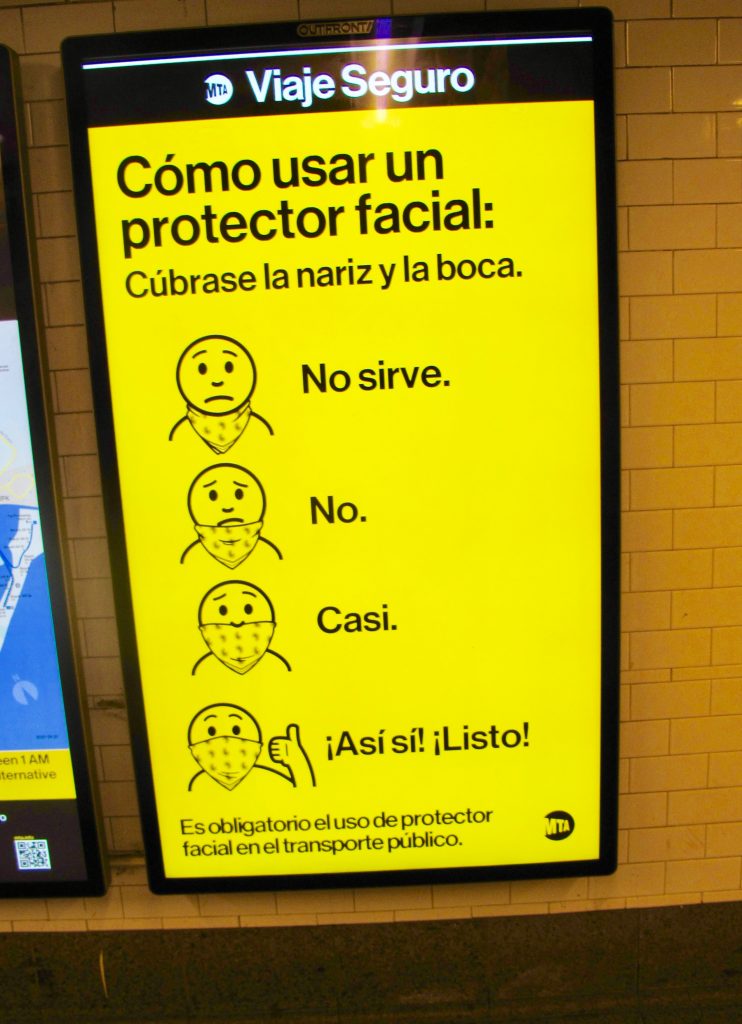
Monday, September 14
After doing a load of laundry, I wandered around our East Village neighborhood a little more. Veselka, the 2nd Ave. coffee shop and home of legendary Ukranian borscht and pierogis, is still open, as is Porto Rico Importing Co. on St. Mark’s Place, where I picked up a pound of Italian espresso ground for a French press. Westside Market, improbably located on the East Side at 3rd Ave. and 12th St., is apparently thriving—and soon to become the third busiest market in the area as the Food Emporium is soon to close.
But the string of small Asian restaurants along that same stretch of Third Avenue seems doomed. They were never very bustling. Lots of other storefronts are abandoned and empty. I cannot even remember what was once there.
I went into H Mart, the Asian “convenient store,” as its sign once proclaimed. There were plenty of customers there, buying both prepared food and hard-to-find Asian ingredients.
I did the latter. The Times has an increasing number of Korean recipes, calling for Gochujang hot pepper paste among other things. I’ve never had it, so far as I know, but I will now. The 17.7 oz. container that I picked up says it contains wheat flour, corn syrup, hot pepper powder, distilled alcohol, defatted soybean powder, and more. Will it taste very different from Sriracha? More umami, perhaps? We’ll see.
I’m reading a book I’ve apparently neglected, Vertigo, by one of my favorite writers, W.G. Sebald. The cover says it was his first novel and that it concerns a trip across Europe described by an unnamed narrator. That person tells of his time in Vienna, Venice, Verona, Riva, and a small Bavarian village. Sebald’s usual concerns—memory, the past, mystifying encounters, lethargy—are all here. Don’t those seem like appropriate preoccupations for the lockdown?
Early on, during his sojourn in Venice, Sebald displays the insight that had me nodding in understanding:
“As you enter into the heart of that city, you cannot tell what you will see next or indeed who will see you the very next moment. Scarcely has someone made an appearance than he has quit the stage again by another exit….If you walk behind someone in a deserted alleyway, you have only to quicken your step slightly to instill a little fear into the person you are following. And equally, you can feel like a quarry yourself. Confusion and ice-cold terror alternate.”
Yes, these are the very sensations that lie beneath the surface of the Venice-based Daphne du Maurier story “Don’t Look Now,” made into a haunting movie by Nicolas Roeg.
The shade of Franz Kafka makes repeated appearances in Sebald’s account—once during an imagined trip of his from Prague to Riva, and again in the form of two twin boys who enter the narrator’s train, looking exactly like the famed writer. They have “the same dark eyes and thick brows, the same large and unequal ears, with the lobes growing into the skin of the neck.” Did Kafka really go to the movies? Might he have seen an early Tom Mix western?
The 15th is tax day, the deadline for submission of quarterly estimated IRS payments. What else? Oh, I have a dentist appointment!
Dinner: cold cucumber soup, hot dogs with sauerkraut, baked potatoes.
Entertainment: The season two finale of the Wales-based policier Hinterland on Netflix, plus another episode of Borgen.
